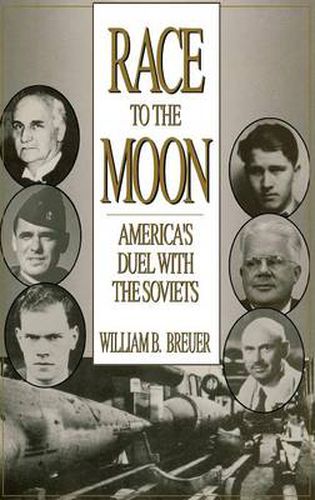Readings Newsletter
Become a Readings Member to make your shopping experience even easier.
Sign in or sign up for free!
You’re not far away from qualifying for FREE standard shipping within Australia
You’ve qualified for FREE standard shipping within Australia
The cart is loading…






Race to the Moon traces the story of how America got to the moon before Communist Russia. The book opens with an appeal by President John F. Kennedy for winning the space race, then flashes back to World War II and traces the history of rocket development by the Germans, who were 25 years ahead of all other nations in rocket R&D. The book tells of feuds among Nazi leaders about who should control the rocket programme, the struggles of German space scientists to persuade Nazi leadership to invest in rocket research, and, finally, the hundreds of individual espionage efforts that went into smuggling information about this new technology out of the Reich and into the hands of British Intelligence. Breuer tells of how young US army officers discovered an underground cache of long-range rockets toward the end of the war and managed to sneak them to America. These same young Americans (and others) mounted a Germany-wide search for rocket scientists, and managed to locate 200 of them, offer them contracts, and bring them and their families to the United States under top-secret security. These German scientists, headed by 31-year-old Wernher von Braun, led America’s rocket research and development during the Cold War and finally took NASA to a triumphant moon landing.
$9.00 standard shipping within Australia
FREE standard shipping within Australia for orders over $100.00
Express & International shipping calculated at checkout
Stock availability can be subject to change without notice. We recommend calling the shop or contacting our online team to check availability of low stock items. Please see our Shopping Online page for more details.
Race to the Moon traces the story of how America got to the moon before Communist Russia. The book opens with an appeal by President John F. Kennedy for winning the space race, then flashes back to World War II and traces the history of rocket development by the Germans, who were 25 years ahead of all other nations in rocket R&D. The book tells of feuds among Nazi leaders about who should control the rocket programme, the struggles of German space scientists to persuade Nazi leadership to invest in rocket research, and, finally, the hundreds of individual espionage efforts that went into smuggling information about this new technology out of the Reich and into the hands of British Intelligence. Breuer tells of how young US army officers discovered an underground cache of long-range rockets toward the end of the war and managed to sneak them to America. These same young Americans (and others) mounted a Germany-wide search for rocket scientists, and managed to locate 200 of them, offer them contracts, and bring them and their families to the United States under top-secret security. These German scientists, headed by 31-year-old Wernher von Braun, led America’s rocket research and development during the Cold War and finally took NASA to a triumphant moon landing.